High Blood PRESSURE
Do you know your blood pressure?
> 1 in 4
in Taiwan, more than
1 in 4 men have
uncontrolled high
blood pressure.
> 1 in 5
in Taiwan, more than
1 in 5 women have
uncontrolled high
blood pressure.
What is High Blood Pressure ?
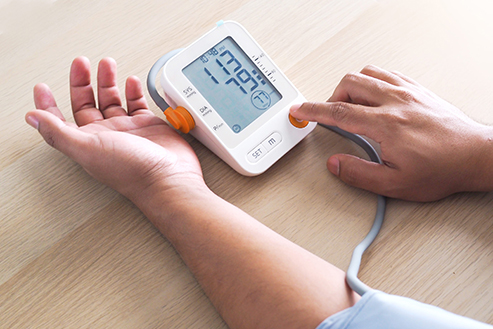
First, let us consider blood pressure,
The force of blood pushing against the walls of blood vessels (arteries) while it is pumped by the heart creates blood pressure. With more pressure, the heart has to pump harder, causing more damage to many parts of the body, particularly the brain, heart and kidneys.1
Two main factors contribute to the variations of blood pressure:
- The amount of blood pumped by the heart
- The amount of resistance to blood flow in the arteries.
The more blood the heart pumps and the narrower the arteries are, the higher the blood pressure is.2
Definition of Hypertension
Blood pressure can be low, normal, or high, and there is range that is considered a healthy blood pressure; but over time and with age, blood pressure rises. Why? The walls of large arteries become more rigid and the small blood vessels become narrower. Because of these changes, the heart has to generate a greater force to keep blood flowing around the body. This leads to an increase in blood pressure.3 Hypertension is defined as blood pressure that is consistently higher than 140/90 mmHg4; it is common not to notice any high blood pressure symptoms
- SYSTOLIC blood pressure (mmHg) :
The highest level of blood pressure, when blood is pumped from the heart to the entire body.
- DIASTOLIC blood pressure (mmHg) :
The lowest level of blood pressure, when your heart is relaxed before it contracts again.
Optimal:
- Systolic <120
- Diastolic <80
Normal:
- Systolic <120-129
- Diastolic 80-84
High normal:
- Systolic 130-139
- Diastolic 85-8
Let us check how to interpret your blood pressure values.4
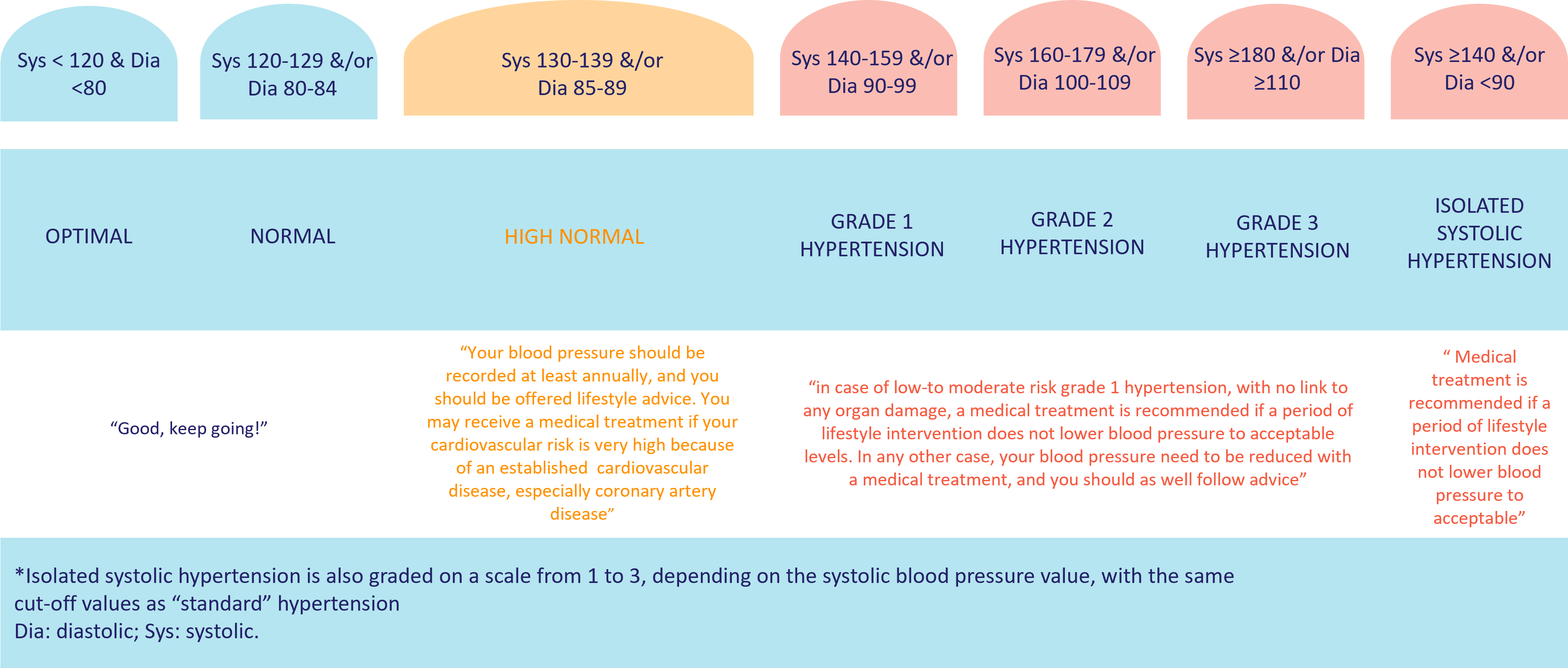
Hypertension : a worldwide problem5
- 1.3 Billion: Around the world, hypertension affects about 1.3 billion people.5
- 34% prevalence in men.5
- 32% prevalence in women 5.
- 60% prevalence in patients over 60 years old.2
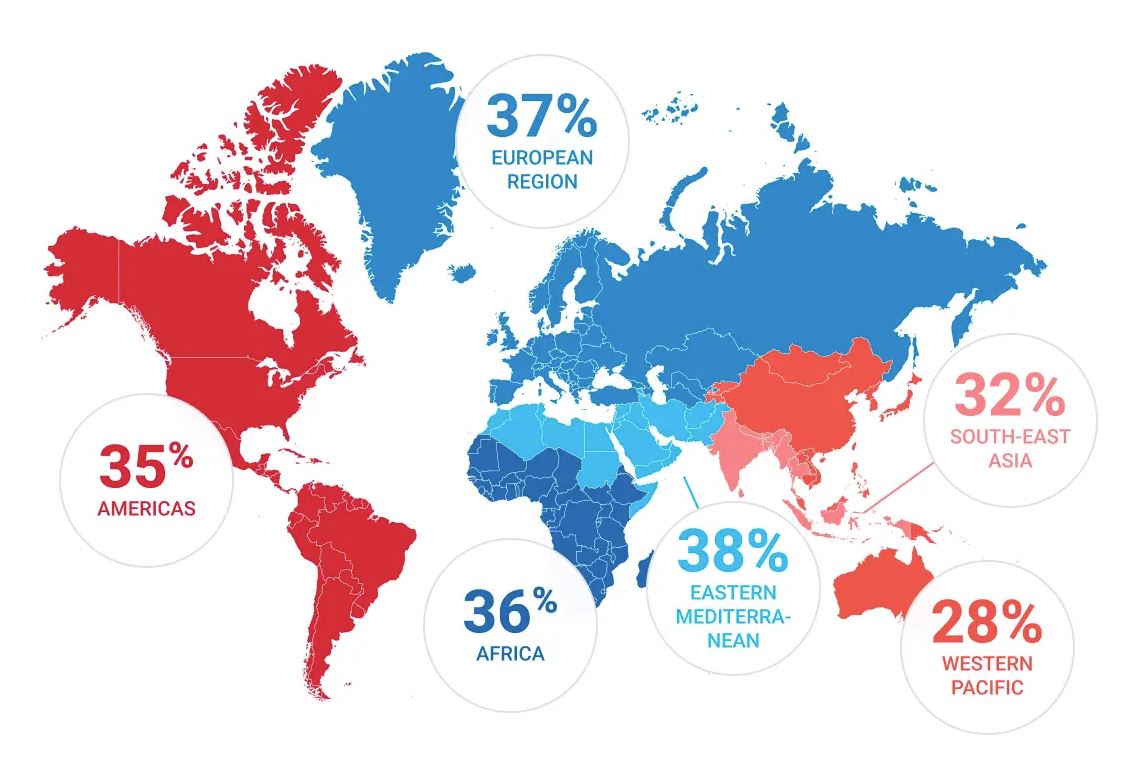
Age-standardized prevalence of hypertension among adults aged 30–79 years, and among those with hypertension, diagnosis, treatment, and effective treatment coverage in 2019, by WHO region 1
What are the causes of Hypertension?
There are two types of hypertension: primary (or essential hypertension) and secondary hypertension.
Primary hypertension
Primary hypertension describes high blood pressure that has no obvious cause. There are number of factors that increase the risk of developing high blood pressure :
- Lack of physical activity
- Stress
- Excessive weight
- Excessive alcohol intake
- Excessive salt intake or too little potassium
- Chronic heavy smoking
- Caffeine
- Sugar
- FAMILY HISTORY: Genetic factors likely play some role in high blood pressure, and sharing a common environment and other potential factors may also increase the risk.2
- RACE OR ETHNICITY: Black people develop hypertension more often than other ethnicities, and at a younger age.
Secondary hypertension
is high blood pressure produced by identifiable causes (for example, an abnormal production of hormones from the adrenal glands). Only a small number of patients suffer from this kind of hypertension. Once the cause is found and treated correctly, blood pressure should return to normal.
“With whom should I discuss this if I want to find out more?”
Your general practitioner is the right person to ask about blood pressure.
Why get checked?
A silent disease
Hypertension is usually discovered fortuitously during a routine examination, but the first time someone finds out that they have high blood pressure is often when they are taken to hospital because it has led to a stroke or a heart problem.
Indeed, hypertension is said to be a silent disease that can be fatal, because it often has no warning signs or symptoms. Yet up half to the people with hypertension may be unaware they have it, as they do not exhibit signs or symptoms. This is why hypertension is considered as a global public health issue.
The only way to know whether a person has hypertension is by having their blood pressure checked. For that very reason, it is recommended that you get your blood pressure checked routinely at least every 5 years if you are over 40 years of age, or more often if you have high blood pressure, in accordance with your health care team.6,7,8
- 1.3 Billion: Around the world, hypertension affects about 1.27 billion people.9
- 50% of men and 41% of women have hypertension but are undiagnosed .9
- 10 Million deaths / year 9.
- 1/5 deaths worldwide .10
How can hypertension affect your body?
When you have hypertension, your heart has to work harder to ensure the flow of blood around your body. Over time, this high pressure can gradually weaken your heart and damage artery walls, leading to changes in blood flow. All these situations lead to an increased risk of developing cardiovascular disease (stroke, heart disease, and heart failure). Other parts of the body, including the kidneys, limbs, and eyes, may also suffer damage.11
Stroke
High blood pressure can narrow or burst arteries that supply blood and oxygen to the brain, causing a stroke. Brain cells die during a stroke because they do not get enough oxygen. Stroke can cause serious disabilities in speech, movement, and other basic activities. A stroke can kill you.12
Heart diseases
Coronary artery disease: due to fatty deposits, the main arteries that supply your heart become clogged up.13
Heart attack: the blood supply to your heart is blocked and heart muscle begins to die without enough oxygen.12
Vision loss
Due to damage in small blood vessels in the retina.11
Kidney failure
High blood pressure can damage the arteries around the kidneys and interfere with their ability to filter blood effectively.11
Atherosclerosis
This condition occurs when too much cholesterol plaque builds up in your arteries, causing them to narrow. 13
Causes of hypertension
Sometimes other diseases can worsen or impact a primary disease. These other diseases are what we call comorbid diseases. Hypertension has its own set of “bad friends”, the main ones being:
Hypercholesterolemia
high levels of LDL-cholesterol in the blood are associated with an increased risk of CVDs, such as atherosclerosis and coronary artery disease.14
Type 2 diabetes mellitus
elevated blood sugar levels over a prolonged period of time lead to complications such as stroke, foot ulcers, and eye damage.15
Coronary artery disease
atherosclerosis (the presence of cholesterol plaques) in the coronary arteries limits the blood flow to the heart, which leads to a lack of oxygen for myocardial cells. A common symptom is chest pain, angina, which often occurs during exercise.16
Chronic kidney disease
when kidneys do not function properly over months or years, this can lead to complications such as cardiovascular disease, anemia (ie, red cells in the blood are either insufficient, or they don’t function properly), or pericarditis (ie, inflammation of the pericardium, the sac-like tissue that surrounds the heart, holds it in place and helps it to work).17,18
Once you know that you have high blood pressure, the good news is that you and your doctor can take steps to control it.
How often should I see my GP about hypertension?
Depending on your age, once every 2 years is considered adequate. Still, if you are over 40 years of age, once a year is a safer option. If you have already been diagnosed with abnormal blood pressure, tests should be more frequent, as per your doctor’s recommendations.19
Taking control
What lifestyle changes can I implement?
Though you cannot do anything about your age or your genes, lifestyle interventions can help you keep your blood pressure lower and reduce your cardiovascular risk.
You can already have a huge influence on reducing your high blood pressure by changing your lifestyle habits.20 The most important changes that you can make are:
Start doing regular physical activity
Doing a regular physical activity is an important part of hypertension management. Of course, you need to define with your doctor the most suitable activity based on your profile. A medical check-up is sometimes mandatory. Physical activity is very important for your heart and circulatory system. The usual recommendation is 30 minutes of physical activity a day for the leas 5 days a week.20
Try to lose weight
When you are overweight, you are at increased risk of cardiovascular disease, diabetes, and high blood pressure. Therefore, targeting optimal weight is a goal that each hypertensive patient should try to reach. Losing weight complements the action of antihypertensive treatment. A formula can help you to calculate your recommended weight, which is based on your height. This formula determines body mass index (BMI). You just need to divide your weight (in kilograms) by your height (in meters) squared. An ideal BMI should be between 18.5 and 25 kg/m2
Improve your diet
Good dietary nutritional balance is also a key part of successful high blood pressure management. Diet is easy to improve if you follow these 4 main recommendations 20:
- Eat at least 5 portions of fruit & vegetables per day (300-400 g)
- Limit the use of fats and oils (especially animal fats, palm oil))
- Limit salt consumption
- Eat more fatty fish, 2-3 times a week (salmon, sardines or mackerel))
Relax
You need to learn how to handle your stress! Stress can from time to time increase your blood pressure and heart rate. In addition, stress can also encourage behaviors that will increase your blood pressure (for exemple, poor diet, physical inactivity, smoking or drinking more alcohol than usual). Relaxing activities such a Yoga or Tai chi, can help you to reduce your stress, and simple tips can help you to manage it in your daily life !
Adopt a healthy lifestyle
- Reduce your alcohol consumption
- Stop smoking
Regular follow-up
Monitoring your own blood pressure at home is very important and can be part of successful hypertension management.
Regular blood pressure measurement is key to keep your blood pressure under control. Because high blood pressure is usually symptomless and can fluctuate over time, you need to check your blood pressure regularly to ensure your treatment plan is working.
How do we measure blood pressure?
Most of the time, it is your doctor or a nurse who will measure your blood pressure, for example, during a routine visit. To do so, they will use a sphygmomanometer. It is a pressure-measuring device (manometer) connected to an inflatable cuff that is wrapped around your upper arm. The doctor will inflate the cuff, and you will feel your arm being squeezed quite hard. The air in the cuff is then let out slowly, and you will feel the grip of the cuff lessen. Blood pressure can then be measured with the manometer (in millimeters of mercury [mm Hg]).
Two different sphygmomanometers exist
Manual
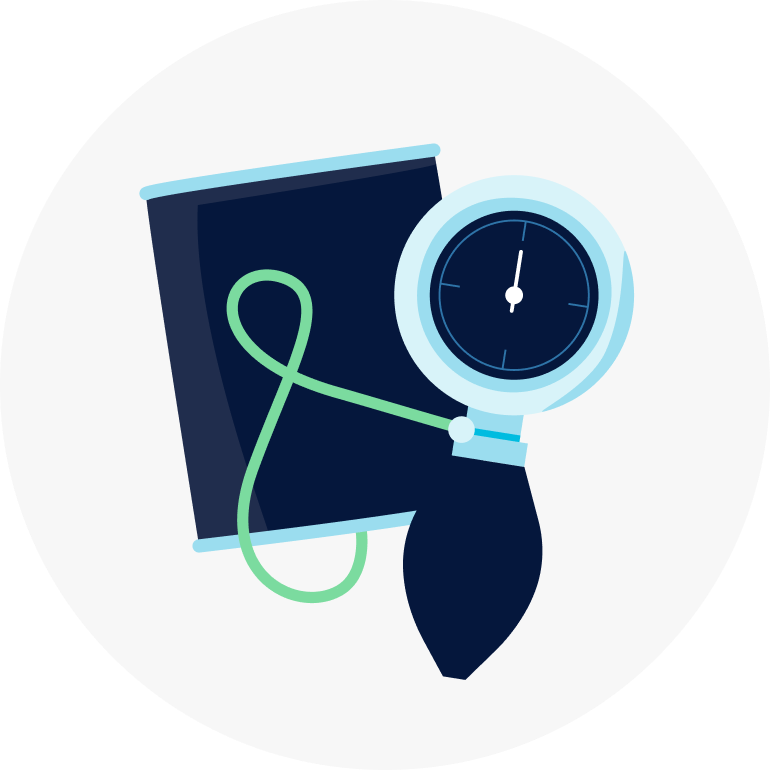
The doctor or nurse inflates the cuff using a hand pump and then uses a stethoscope to listen to your pulse.
Digital Interface
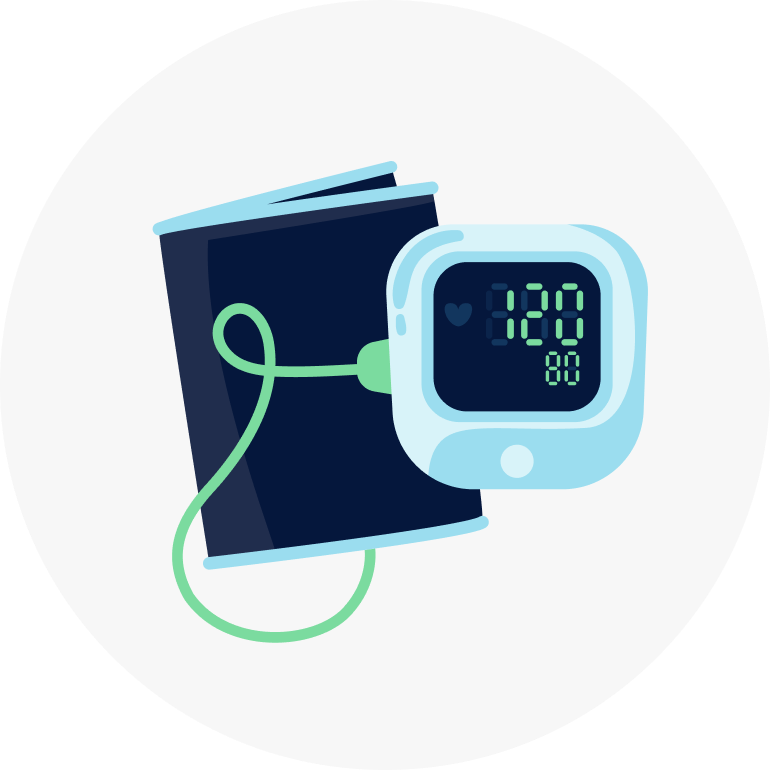
The cuff inflates and deflates automatically. The pulse is detected by a sensor inside the device.
To get an accurate measurement of your blood pressure when a measurement is taken, you should have rested for at least 5 minutes previously and be seated and silent, i.e., not talking.
How can you protect yourself?
Taking your antihypertensive treatment every day is crucial for controlling your blood pressure and ensuring long-term cardiovascular protection, but it is not always easy to remember to take them. Just like brushing your teeth, taking your antihypertensive treatment can become part of your daily routine. And remember, hypertension is a silent disease: not feeling a difference is not a reason to stop your treatment!
To protect yourself do not forget to take your medication every day !
Here are some tips to help you remember :
- Put an alarm on your phone
- Associate it with another habit
- Check a box after your pill is taken
- Put an alarm on your phone
Please be aware !
Having correct blood pressure values (<130/80 mm Hg) does not mean that you are cured!* It is important to keep taking your treatment as prescribed by your doctor!
*<130/80 mm Hg is normal for patients <65 yo. For patients >65 yo, normal blood pressure is 130-139/70-80 mm Hg.
References
- Global report on hypertension: the race against a silent killer. World Health Organization. Published September 19, 2023.
- CDC. Know Your Risk for High Blood Pressure. Last updated March 2023.
- Pollock JD, Murray IV, Bordes SJ, et al. Physiology, Cardiovascular Hemodynamics. [Updated 2023 Mar 13]. In: StatPearls [Internet]. Treasure Island (FL): StatPearls Publishing; 2024 Jan-.
- Mancia G et al. JHypertens.2023;41(12):1874-2071.
- Oliveros E et al. Clinical Cardiology. 2020;43:99–107.
- Centers for Disease Control and Prevention. Measure your blood pressure. Accessed January 28, 2024.
- Centers for Disease Control and Prevention. About high blood pressure. Accessed January 2024.
- NHS. High blood pressure (hypertension). Accessed January 2024.
- World Health Organization. Global report on hypertension: the race against a silent killer. Published September 19, 2023. Accessed January 2024.
- American Heart Association. Health threats from high blood pressure. 2022. Accessed January 2024.
- Centers for Disease Control and Prevention. High blood pressure symptoms and causes. Accessed January 2024.
- NHS. Overview: coronary heart disease. Accessed January 2024.
- NHS: Heart attack. 2023. Accessed January 2024
- Ajar R. Heart Views. 2017;18(3):109-114.
- Deshpande AD et al. Phys Ther. 2008;88(11):1254-1264.
- National Institute of Health – National Heart, Lung, and Blood Institute. What is Coronary Heart Disease? Accessed March 2024.
- Vaidya SR, Aeddula NR. Chronic Renal Failure. Update October 24, 2022. Accessed January 2024. StatPearls Publishing; 2022.
- American Heart Association. What is pericarditis? Accessed January 2024.
- Mayo Clinic. Blood pressure test. Published May 27, 2022. Accessed January 2024.
- Mancia G et al. JHypertens.2023;41(12):1874-2071.